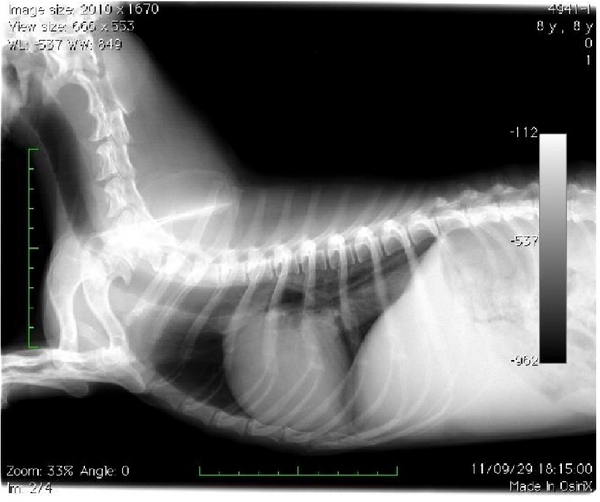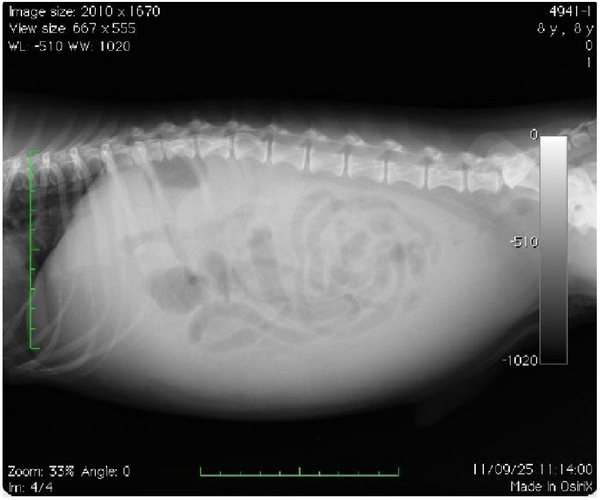Pheochromocytoma in Dogs
Pheochromocytoma is a kind of Adrenal Medulla Tumors. The adrenal glands are a pair of glands located above each kidney. The adrenal glands have an outer cortex that is responsible for producing many chemicals (hormones) that influence certain organs and metabolic activities in the body. The inner part of the adrenal gland is called the medulla. The adrenal medulla is responsible for producing hormones such as epinephrine, norepinephrine, and dopamine. These hormones have various roles in the body; for example, epinephrine and norepinephrine affect heart rate and blood pressure.
The cells that create these hormones are called chromaffin cells.
A malignant form of this tumor is called pheochromocytoma. It involves abnormal growth of the chromaffin cells in an uncontrolled way, causing the formation of a tumor.
Adrenal medulla tumors are very rare in dogs and even more rare in cats.

What causes this type of tumor?
The reason a particular pet may develop this, or any tumor or cancer, is not straightforward. Very few tumors and cancers have a single known cause. Most seem to be caused by a complex mix of risk factors, some environmental and some genetic or hereditary. In the case of pheochromocytomas, there is no known cause.What are the clinical signs of this type of tumor?
These tumors may go undetected for a long time and clinical signs may be subtle. These signs could include weakness or collapse, excessive panting and restlessness, newly noted anxiety, and an increase in drinking and urination. Anxiety, restlessness, weakness, or collapse in combination with episodes of high blood pressure and an elevated heart rate would prompt your veterinarian to investigate further if revealed during a physical exam.
How is this cancer diagnosed?
These tumors are sometimes diagnosed via ultrasonography of the abdomen, although more advanced imaging (MRI and CT scan) is often required. Patients are usually older dogs with episodes of clinical signs related to the release of epinephrine and norepinephrine. If your pet has been exhibiting signs as described above, your veterinarian may recommend an abdominal ultrasound.
How does this type of tumor typically progress?
The biggest concern with these tumors is their ability to continue to grow and invade local tissues. There are large blood vessels in the abdomen closely associated with these glands. If a large portion of the tumor invades one of these vessels, it can make surgical removal difficult or impossible.
Metastasis (spread) is an additional concern and has been noted in up to 40% of dogs with pheochromocytomas. Staging (searching for potential spread to other locations in the body) is highly recommended. This may involve blood work, urinalysis, radiographs (X-rays) of the lungs, and abdominal ultrasound.

What are the treatments for this type of tumor?
The most common treatment for these tumors is the surgical removal of the affected adrenal gland. CT scans of the abdomen are usually required prior to surgery to determine if the tumor has invaded any local blood vessels that could make surgery difficult or dangerous for your pet. To reduce potential complications associated with the periodic release of hormones, medications to control hypertension or heart arrhythmias such as phenoxybenzamine (Dibenzyline®) or sotalol (Betapace®) may be prescribed ahead of surgery.
These tumors are generally treatable when small and your pet can have an excellent quality of life afterward.



